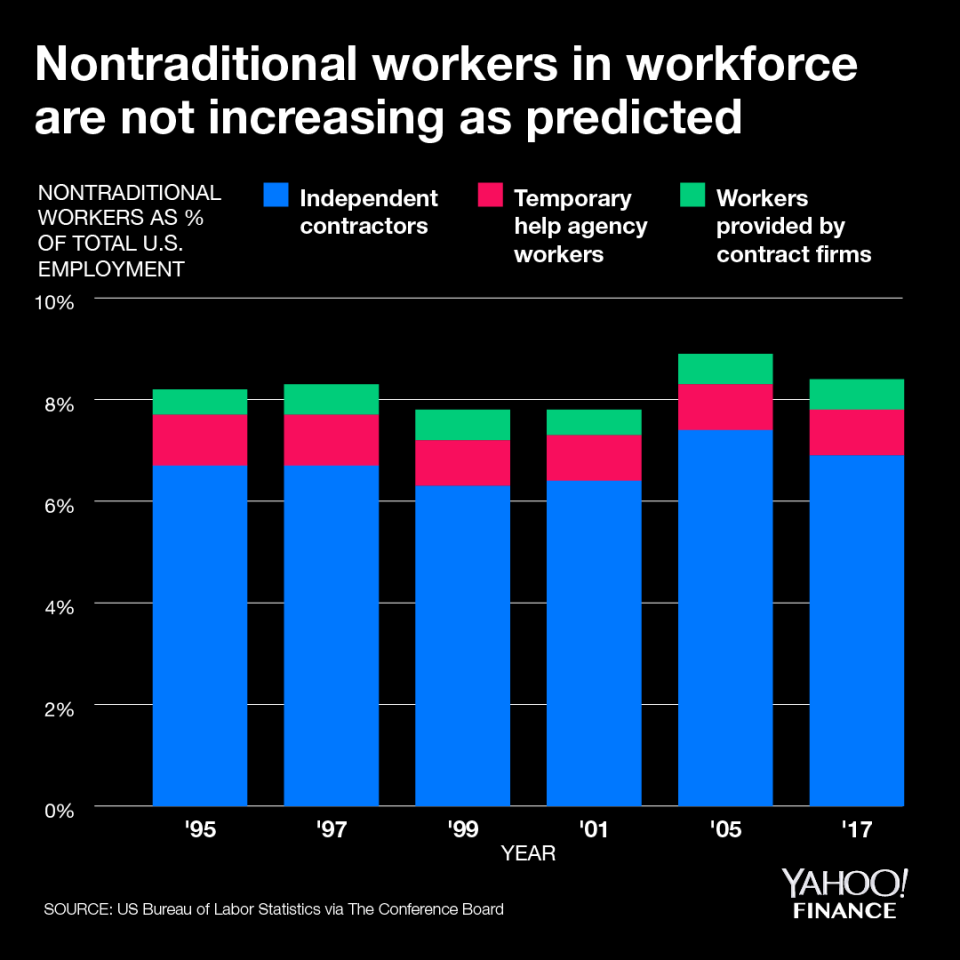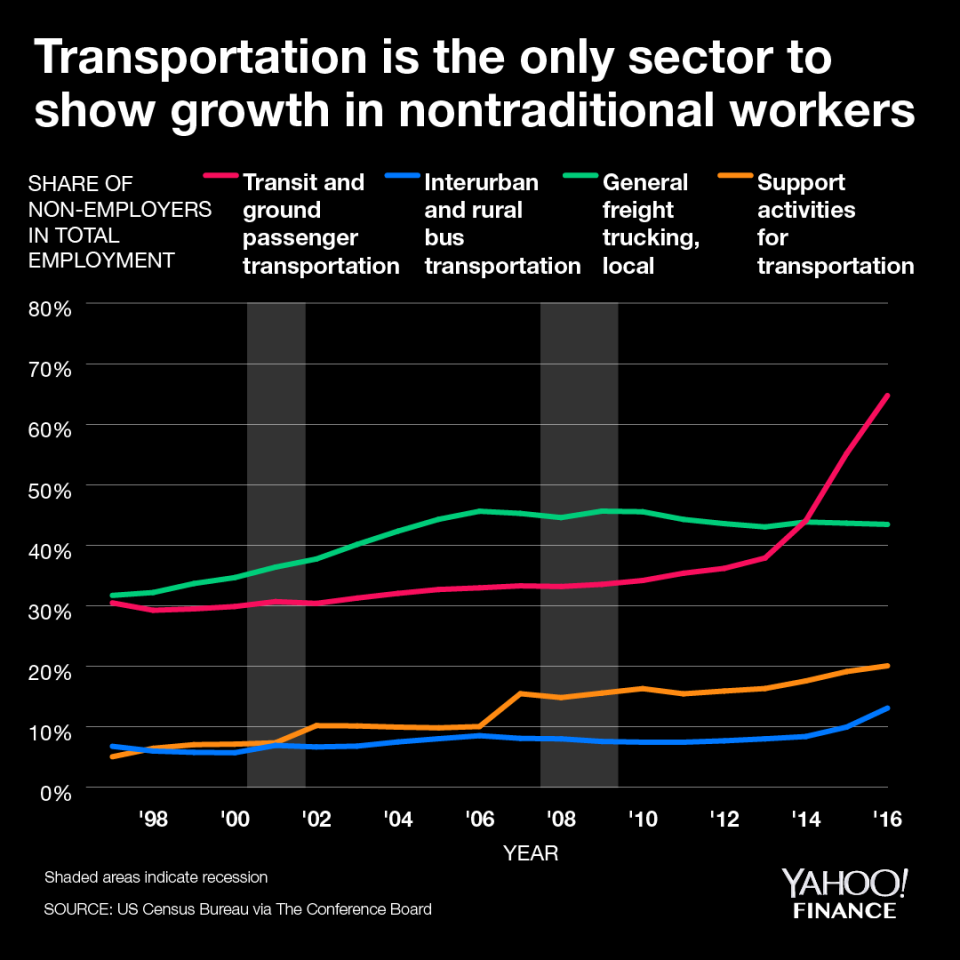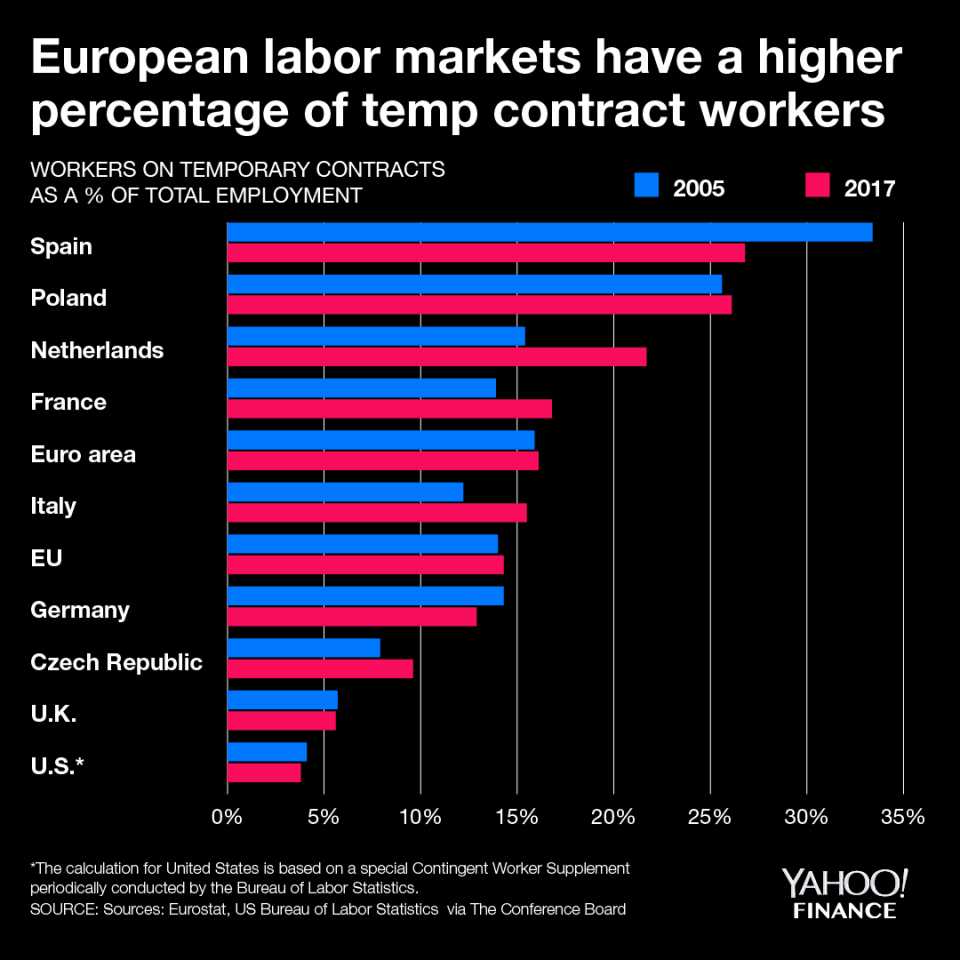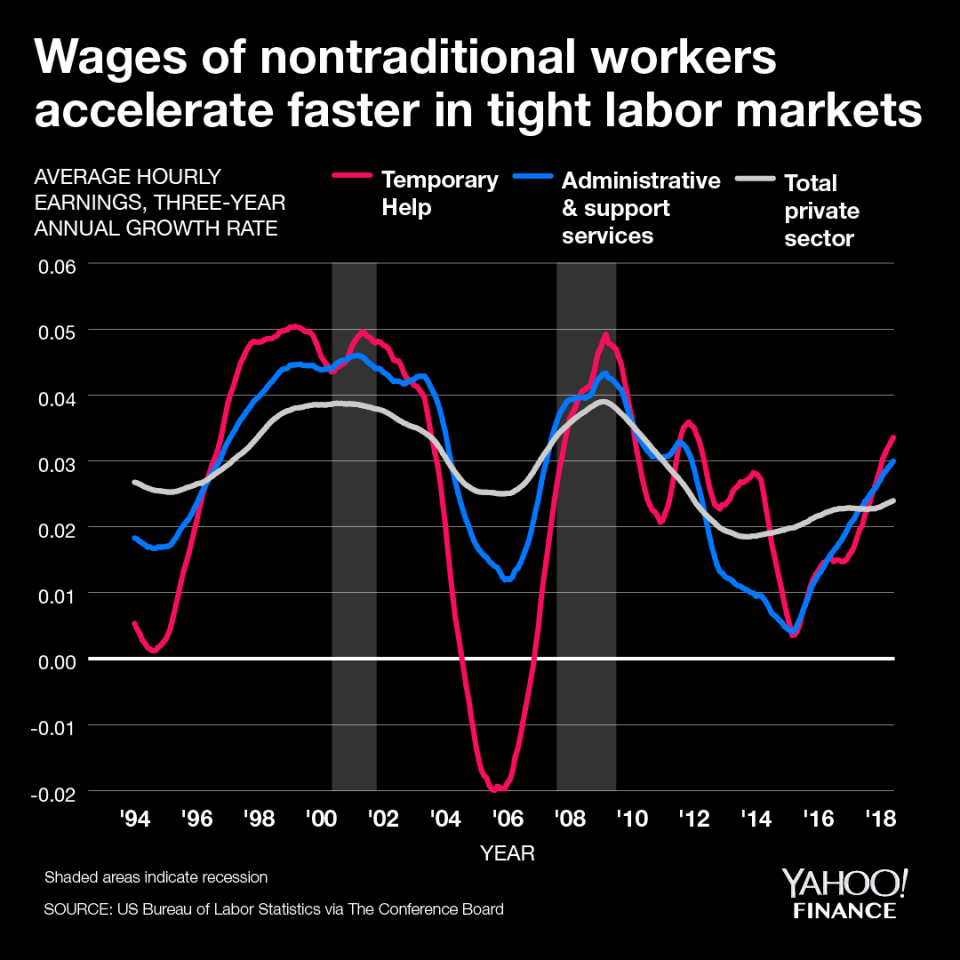The 'gig economy' is hugely overhyped, new study says
The so-called U.S. gig economy is not the transformational 57-million worker trend that it’s been made out to be, according to a new study from non-profit business-research organization Conference Board.
The term “gig economy” first emerged during the Great Recession. According to Bloomberg, “the perceived rise of such freelance, independent work has spurred much discussion of whether labor laws and employee benefits needed to be restructured in order to reflect the new reality of gig work.”
Conference Board defines gig workers, or nontraditional occupations, as those which usually “perform non-core functions, offer relatively low pay, are tied to seasonal or varying demand, call for recent or emerging skills or hard-to-find skill sets, don’t require institutional knowledge, and involve specific well-defined tasks where output is easily measured and monitored.” Main examples include independent contractors, temp workers, and contract workers.
The study found that since 1995, the number of independent contractors, temp workers, and contract workers has actually remained relatively unchanged over the years. It has never risen above 10% of the total workforce.

‘The labor market is tightening’
In 1995, independent contractors made up 6.7% of the labor force, temp workers were 1%, and contract workers were 0.5%. In 2017, independent contractors were 6.9%, temp workers were 0.9%, and contract workers were 0.6%.
“The fact that the labor market is tightening,” combined with fluctuations in the supply and demand for work, “makes it difficult to recruit,” Gad Levanon, chief economist for Conference Board North America, told Yahoo Finance.
A Bureau of Labor Statistics survey released in June 2018 showed that the number of nontraditional workers decreased from 2005. As the labor market tightens, more and more nontraditional workers are likely to find a regular job. Levanon thinks that this limiting factor is something that will continue to “impact the growth” of the nontraditional sector.
One exception
The exception to this overhype notion is ridesharing and transportation delivery, although Levanon noted that it makes up a “very small part” of the economy.
The transportation sector has seen a major increase in the percentage of self-employed workers over the last two decades. Since 1998, it has jumped by approximately 35% and has not shown signs of a slowdown.

Brian Schaitkin, a senior economist for Conference Board, believes that one of the reasons why the transportation delivery space has seen such success in labor market platforms is because jobs are easy to find.
“When someone pulls out their phone to hire an Uber driver, the task is to move from point A to point B,” Schaitkin told Yahoo Finance. “There are very few jobs where the requirement is so simple.”
He added: “Transportation is remarkably well-suited to growing quickly relative to other types of jobs you put on labor market platforms.”
The power of Uber
Conference Board also observed that “the share of nontraditional workers may increase due to the emergence of online labor market platforms.”

One such online labor market platform is Uber, which Levanon cites as the “first big” online labor platform.
“It created the expectations that we now spread to other types of industries and jobs,” Levanon said. “And, it’s what created this excitement about the topic.”
As for the direction the gig economy is heading, Levanon thinks things could change.
“I’m not saying online labor market platforms will never become an important part of the labor market,” he said. “But at the moment, transportation platforms are the only place where it’s a big deal.”
The U.S. gig economy just isn’t that big. In fact, many European countries have a much higher number of nontraditional workers than the U.S.

Conference Board theorizes that this could be due the difference in healthcare systems between the two continents. Employment status in the U.S. is intrinsically tied to health benefits, while in Europe, there are “more generous government-provided health and social insurance programs.”
‘Workers in the US are competing for gigs with people from India’
Although the U.S. gig economy hasn’t seen much growth, its wages have. In tight labor markets, average hourly earnings have spiked for nontraditional workers. And for the rest of the labor market, wages have remained relatively stagnant.
Elizabeth Crofoot, a senior economist at Conference Board, said the global labor market is partially responsible for pushing down standard wage growth.
“Workers in the U.S. are competing for gigs with people from India and Southeast Asia, especially in tech,” she said.

Adriana is an associate editor for Yahoo Finance. Follow her on Twitter.
READ MORE:
Follow Yahoo Finance on Twitter, Facebook, Instagram, Flipboard, LinkedIn, and reddit.


